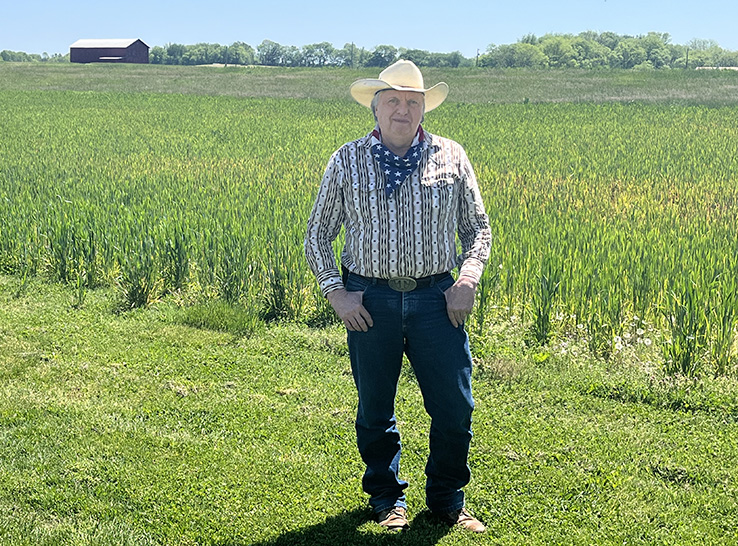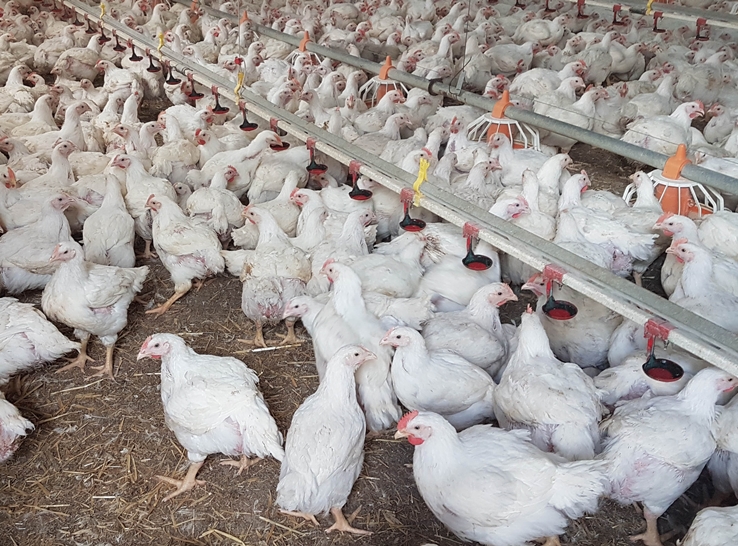By Tom Tabler, PhD
Professor, Extension Poultry Specialist
University of Tennessee Extension Service/Animal Science Department
Middle Tennessee AgResearch and Education Center
Spring Hill, Tennessee
Back in 1979, I was a 23-year-old, newly minted broiler service technician for a poultry integrator in southwest Arkansas. My territory encompassed several rural counties near the rough and rowdy Oklahoma border, where all the beer joints and honky-tonks just across the state line had a cock-fighting pit out back.
At the time — before avian influenza and heightened biosecurity — cock fighting was still legal in Oklahoma and southwest Arkansas was dry, so those state-line establishments were happening places for many folks, especially on Friday and Saturday nights. I often received updates from my growers on the cock-fight outcomes.
But perhaps the most common — and contentious — discussion topic was the tournament pay system, always good for some four-letter words from folks who, as a rule, weren’t generally prone to cussing.
Continuing grievances
Admittedly, there were folks who liked the tournament system in those days. They were usually the top two or three growers on the settlement sheet each week.
From about No. 5 on down though, no one much cared for the tournament system, nor were they shy about saying so. I can’t tell you how many times I heard, “I want to be paid for the job I do. I don’t want my check based on all the other growers I sell with.”
Fast forward 45 years, and I still hear those same words, minus updates on cock fighting, now outlawed in all 50 states. Names, faces and locations have changed, but there are still complaints about the tournament system and in roughly the same proportions. Although a few growers like the tournament system, most want it scrapped.
Granted, the system is not totally flawed. However, like poultry houses that have grown long in the tooth, the tournament system could benefit from a retrofit. USDA’s Agricultural Marketing Service proposes to do just that by amending regulations under the Packers and Stockyards Act of 1921 to better clarify unfair practices and promote fairness and competitive markets.*
Proposed changes
The broiler industry in the US today is more concentrated than ever before, with similar concentrations in the turkey, swine and fed-cattle industries. This concentration has attracted the USDA’s attention.
Based on public comment, the USDA has determined that in its present form, the tournament system violates the Packers and Stockyards Act, which bans meatpackers from using unfair and deceptive practices.
The USDA’s proposed changes do not ban the tournament system outright but, with a three-part rule, would better regulate some of the system’s most unpopular characteristics.
Rule No. 1: Base pay
First, the proposal would prevent integrators from deducting growers’ pay below the stated “base” pay of the contract. Currently, “base” pay is average, not minimum, pay.
That concept is difficult for growers to understand. In a tournament system, half the growers are above and half are below the average pay. The higher you rank above average on the list, the more you make; the farther below average you rank, the less you make.
Some integrators today have a “floor,” or minimum, payment below which a grower cannot go, regardless of flock performance. However, it’s challenging to estimate individual earnings because performance depends not only on one grower’s performance but also on the performance of all other growers that sell the same week at a complex.
That’s why, for 45 years, I’ve heard, “Good or bad, I want to be paid based on my own performance, not the performance of everyone I sell with.” As it is now, growers say, “It means hoping everyone that sells with me does bad, and I do good so that I make more money. I have to wish bad luck on everyone else.”
Rule No. 2: Fair comparison
Secondly, the proposal would require integrators to restructure tournament systems to “provide a fair comparison among growers.”1
In addition, when Mother Nature or other conditions make a fair comparison impossible, a non-comparison payment option must be available. This option could be something like a five-flock past-history average for the farm that some integrators currently use.
Rule No. 3: More transparency
Finally, the proposal would require integrators to provide more transparency (Capital Improvement Disclosure Document2) when they ask growers to make capital investments to upgrade or retrofit their chicken houses. They would also have to provide documentation to demonstrate how upgrades will help growers and explain the risks and uncertainties of the investment.
Unlevel playing field
Much discussion has centered on making things “level” or “equal” for all growers. However, I doubt the playing field will ever be level. Why? Let’s look at growers first.
Grower work ethic, talent
As a young service tech, I quickly learned that a grower’s work ethic on display outside their chicken houses indicated what I would see inside. If the outside looked good (grass cut, farm roads well-maintained and pride in their operation), the inside looked good. If the outside was a mess, the inside was usually a bigger mess.
That’s still true today. Work ethic among growers is not the same. Some growers are in their broiler houses by 6 am, work the houses all day and maybe make their last check after 10 pm. Other growers may have off-farm jobs; they see the birds first thing in the morning but not again until after work.
Growers with less of a strong work ethic may not see the birds until 10 am., be done by noon and not see them again until 10 am the next day.
Poultry production is like life — what you get out of it is directly correlated to what you put into it. Some folks are simply better chicken growers than others. Grower talent level alone means the playing field will never be level.
Integrator influences
Now, let’s look at the integrator side. For example, some growers get chicks from 26-week-old hens, some from 40-week-old hens and some from 65-week-old hens.
Chick quality varies, which everybody knows. Integrators may use more than one genetic line, and genetics may vary. So, not only is grower talent different, but chick talent is also different. Nobody is to blame for that, but it means that the field isn’t level.
Here are some other factors to consider:
- Feed mills break down, or a snowstorm makes roads impassable to some farms but not to others.
- The processing plant stops operating for half a day on Tuesday, and on Friday, a grower who’s scheduled for Friday’s catch gets moved over the weekend to Monday.
- Some growers run out of feed, and some don’t.
Things happen.
We work with live animals, mechanical parts and Mother Nature. Because of this, we will never have a situation where the playing field is level.
Need for incentives
Retrofitting the tournament system may mean integrators will have to find another way to incentivize their growers. Why would growers put out extra effort if there’s no reward? Growers need to have “skin in the game,” an incentive to excel and perform at the highest level.
The tournament system provides such an incentive and has served the poultry industry well for decades, fostering a mutualistic relationship that benefits both growers and integrators. However, although growers at the top of the settlement sheet still like the tournament system, most everyone else (including the USDA) would rather see something else.
Many folks I talk with think that broiler growers should be paid like pullet growers — on a square-footage-of-floor-space basis, with an incentive built in for better-than-average performance. Growers tell me this would increase their faith and increase transparency in future business decisions. Bankers favor this concept, too, because they would have a better idea of what their clients’ expected earnings would be for each flock.
The ratio of square-footage-to-performance incentive would have to be worked out (75:25, 80:20, etc.), but that’s doable.
Final thoughts
I don’t think we will ever have a level playing field. However, any opportunity to improve the tournament system and make the field a half bubble off plumb instead of a whole bubble should be investigated.
In addition, extra effort and a strong work ethic should always be recognized and rewarded because, sadly, these traits are becoming increasingly uncommon today.
Finally, a word of caution about the proposed changes to the tournament pay system: Not every change is for the better. Choices need to be made wisely. Growers need to be careful what they wish for because, sometimes, wishes come true.
Editor’s note: USDA’s Agricultural Marketing Service (AMS) has proposed a new rule called the Poultry Grower Payment Systems and Capital Improvement Systems.
If implemented, the rule would 1) prohibit payment practices that reduce or discount payment rates in a contract under poultry grower ranking systems (commonly known as tournaments) used in contract poultry production for broiler chickens; 2) establish a duty of fair comparison to ensure that grower comparisons are conducted in a reasonable and equitable way that does not disadvantage specific growers and requires live poultry dealers (LPDs) to adopt policies and procedures in furtherance of operating a fair ranking system for broiler growers; and 3) requires LPDs to provide certain information to broiler growers when the LPD requests or requires the grower to make additional capital investments to guard against deception and to enable USDA to better enforce existing prohibitions on unfair additional capital investments adopted in 2011.
According to AMS, the agency “intends for the proposed regulations to address unfairness and deception in broiler grower payments, tournament operations and capital improvement systems.”
On Oct. 17, 2024, AMS told Modern Poultry it was targeting January 2025 for a final ruling.
1USDA Agricultural Marketing Service. Poultry grower payment systems and capital improvement systems. Fed Regist. 2024 June 10;89(112):49002-49054.
2 Ibid.
Editor’s note: The opinions and/or recommendations presented in this article belong to the author and are not necessarily shared by Modern Poultry.







